The width of your tyre, in millimeters, measured from sidewall to sidewall.
Buying new tires can be a daunting task.
Which tires size do I need? What happens if I have the wrong tire size?
In this guide we will tell you what you need to know about your tires to make the right decision for the best and safest fit.
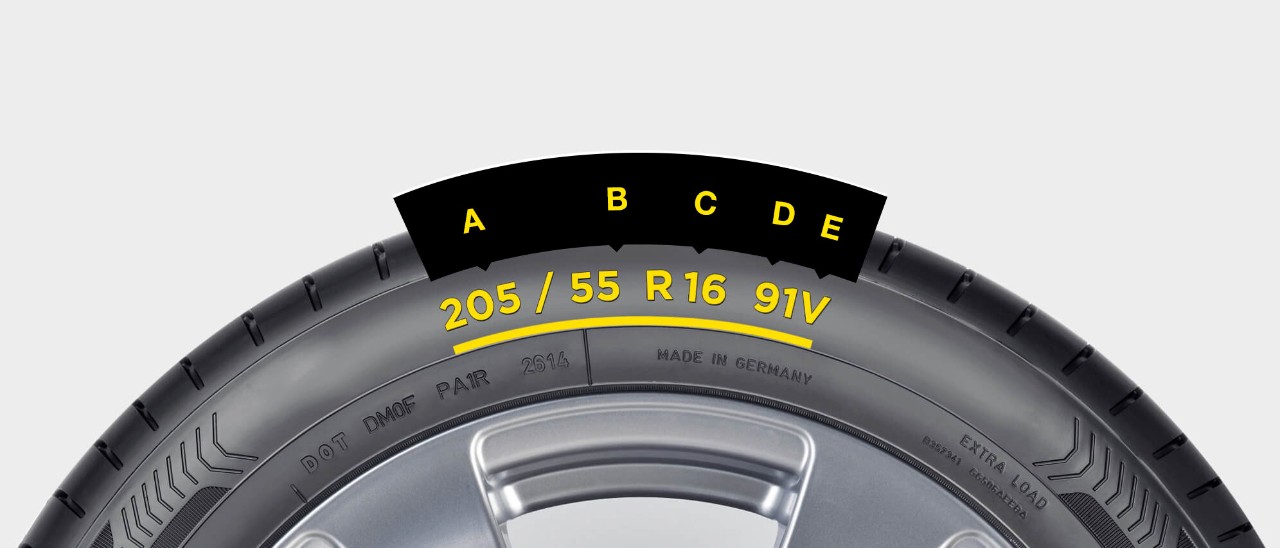
The width of your tyre, in millimeters, measured from sidewall to sidewall.
This is the ratio of the tyre’s cross-section to its width, expressed as a percentage. An aspect ratio of 65, for example, indicates that the tyre’s height is 65% of its width
The diameter (height) of the wheel in inches.
Your tyre’s load index relates to its maximum carrying capacity (in kg). You’ll find the load rating of your tyre on the sidewall, just to the right of the diameter.
For example, a tyre with a load index of 91 can carry 615kg of weight.
Load ratings and speed ratings should be looked at together when you buy a new tyre. Also remember to check your manufacturer’s recommendations.
The speed rating is the maximum speed for a tyre when it is correctly inflated and being used under load. The speed rating is the letter at the end of the sidewall, after the load index number. A tyre with a speed rating of V, for example, has a maximum speed of 240 km/h.
When buying new tyres, make sure you match their speed rating with the speed capabilities of your vehicle.
Depending on which size values you provide in your tyre search, we may show you a choice of tyres sorted in groups based on their load index. This makes it easier for you to understand which of those tyres may be suitable for your vehicle. Please read below how it works.
Most tyres are marked with a Load Index (numerical code associated with maximum load that the tyre can carry when properly inflated) and a Speed Symbol (letter associated with the maximum speed capability of the tyre) e.g. 91V. Tyres fitted as original equipment are suitable for the maximum axle weight and speed capability of the car.
Therefore, when replacing tyres, it is essential to fit either the size and type identical to those fitted on the car originally, or the alternatives recommended by vehicle manufacturer / tyre manufacturers in their official literature.
Changes in tyre size, structure, load and speed rating should not be made without first seeking advice from the tyre or vehicle manufacturer or specialist as the effect on safety, vehicle behaviour and clearances must be considered.
Extra load tyres (XL):
Reinforced tyre designed for a higher load capacity and higher inflation pressure than the Standard version. SUVs, Vans, minibuses or off-road vehicles are typical cars which often require extra load tyres. These tyres have the additional marking “REINFORCED” or “EXTRA LOAD”. They can be used as an alternative for a standard load tyre.
Standard load tyres:
Regular tyres are suitable for regular passenger cars or SUVs for instance.
When replacing tyres, it is essential to fit either the size and type identical to those fitted on the car originally, or the alternatives recommended by the vehicle manufaturer / by tyre manufacturers in their official literature. Replacement tyres must have a Load Index and a Speed Symbol at least equal to those of the original tyres.
C-type or Light truck tyres (C):
The C stands for commercial. Those tyres are specially built for commercial vehicles like vans, small transporters, small busses or light trucks. These vehicles need to carry heavy loads. Not suitable to fit on a passenger or SUV classified vehicle. The C-type tyres are made of several reinforced layers and fitted for carrying heavy loads.
It may be possible to fit tyres with higher load indexes and different speed ratings to those indicated in your vehicle’s manufacturer documentation.
However, always check first in your vehicle’s manufacturer documentation if these tyres may be fitted on your vehicle and if using these tyres is permitted under your local laws and regulations. You should also comply with all applicable requirements of your local laws and regulations and not exceed the specifications of these tyres as well as those indicated in your vehicle’s manufacturer documentation in terms of speed and load. Your dealer may help you verifying this before purchasing or fitting tyres.
Yes, this may be possible. However, always check first in your vehicle’s manufacturer documentation if these tyres may be fitted on your vehicle.
Yes, this may be possible. However, always check first in your vehicle’s manufacturer documentation if these tyres may be fitted on your vehicle.
Yes, this may be possible. However, always check first in your vehicle’s manufacturer documentation if these tyres may be fitted on your vehicle.
Yes, you can use all-season or winter (M+S) tyres that have a lower speed rating so long as: a) a sticker that shows the maximum speed limit is in the driver’s field of vision and b) you don’t drive the vehicle faster than the maximum speed limit. However, always check first in your vehicle’s manufacturer documentation if these tyres may be fitted on your vehicle.
Yes, you can fit tyres that have a higher load index and a lower speed rating.
You can use all-season or winter (M+S) tyres that have a lower speed rating so long as: a) a sticker that shows the maximum speed limit is in the driver’s field of vision and b) you don’t drive the vehicle faster than the maximum speed limit.
However, always check first in your vehicle’s manufacturer documentation if these tyres may be fitted on your vehicle.
( Dunlop's ROF (/ DSST) technologies )
The technology ensures a driver can continue his journey, when having a puncture in the tire treadth, for 80 kilometers at 80 km/hour. Highly relevant for BMW & Mercedes-Benz.
( Dunlop's Sealtech (ST) )
The technology ensures the tire is sealed when having a puncture up to 5 mm in diameter in the tire treadth. The driver can continue his journey. Highly relevant for Volkswagen.
( Dunlop's Fringe Protector (MFS) )
The technology relates to the thicker sidewall of the tire which makes it less vulnerable for punctures. Highly relevant for last-mile delivery vehicles ( stop/go ).
( Dunlop's SoundComfortTechnology (NST) )
The technology ensures a much quieter and more pleasant journey, as it reduces the noise in the vehicle interior by up to 50%. Highly relevant for electric cars.
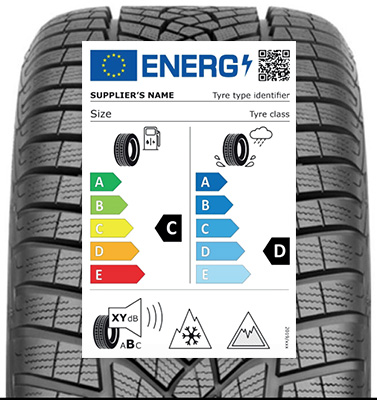
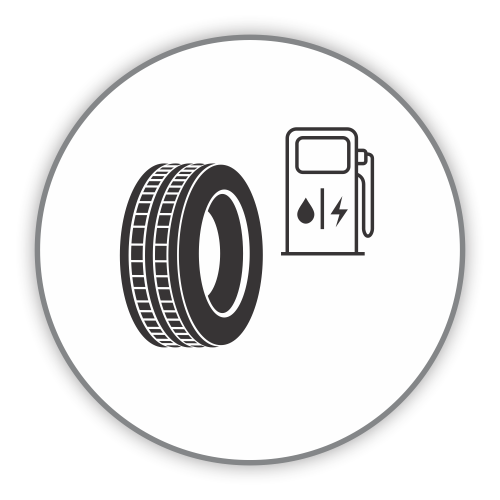
Fuel efficiency is a measure of the tyre's rolling resistance. A tyre with low rolling is more fuel efficient since it requires less energy to roll. Fuel efficiency is rated from A (highest rating) to E (lowest rating).
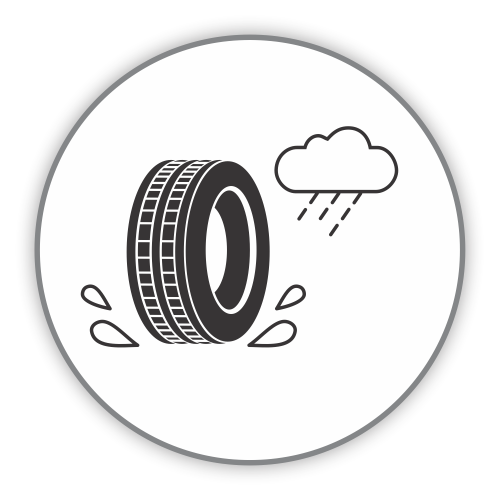
Wet grip is a measure of tyre’s braking ability on wet roads. Wet grip is rated from A (highest rating) to E (lowest rating).
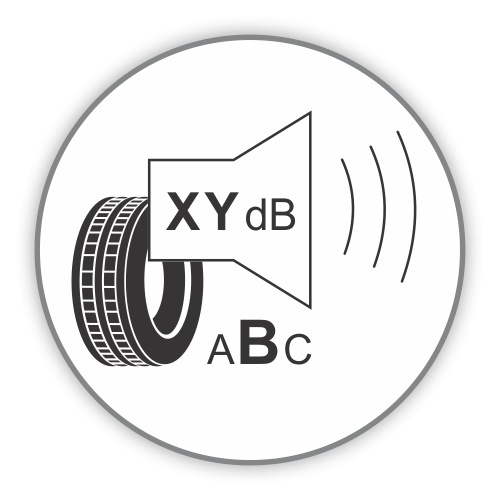
The external noise generated by the tyre, measured in decibels. The noise class is rated from A (quiet) to C (noisy).
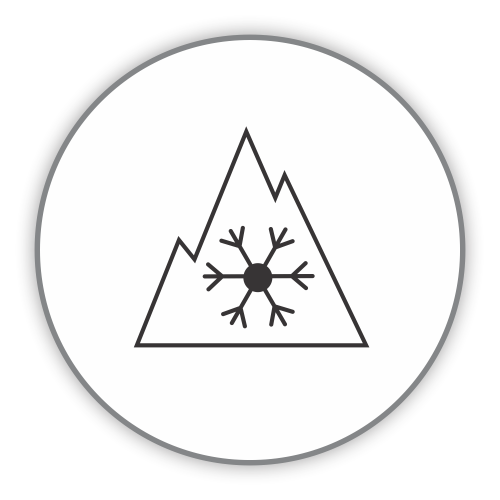
Snow Grip. Tires with 3 peak mountain snowflake pictogram have shorter braking distance on snow cover roads, essential for keeping you safe in snow winter conditions. For passenger vehicles, the pictogram is granted by measuring the braking distance of a car from 25 kph on compacted snow or by measuring the traction force of a tire. For truck, the pictogram is granted by measuring the acceleration performance of a tire.